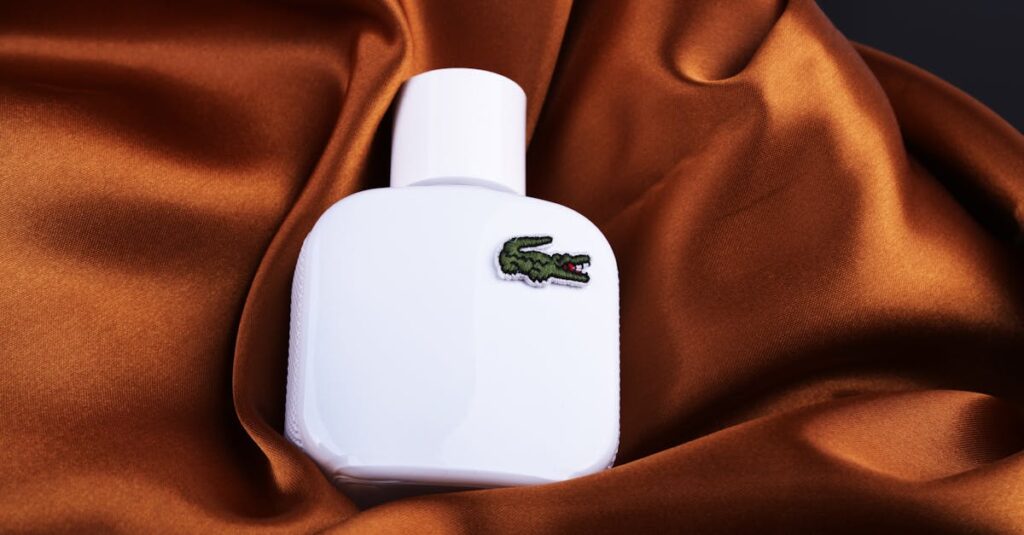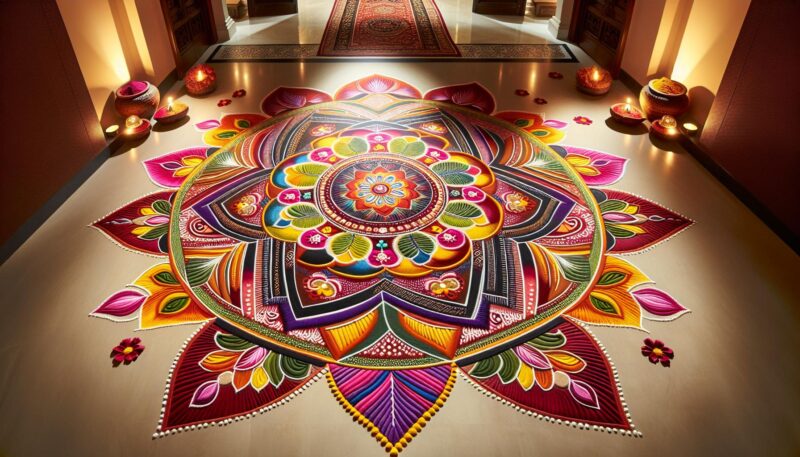
When it comes to iconic fashion brands, Lacoste stands out with its unique logo and rich history. The famous crocodile emblem isn’t just a symbol; it represents a lifestyle that blends sport and elegance. I’ve always been fascinated by how a simple logo can evoke such strong feelings and memories, making it a staple in wardrobes around the world.
This article dives into the significance of the Lacoste logo, exploring its origins and the brand’s evolution over the years. Whether you’re a fashion enthusiast or just curious about brand identities, understanding the story behind this emblem can give you a fresh perspective on the power of design in the fashion industry. Let’s unravel the layers behind the Lacoste logo and see what makes it truly special.
Key Takeaways
- Origin and History: The Lacoste logo, created by René Lacoste in 1933, is rooted in sports heritage and embodies the nickname “”The Crocodile”” due to his tenacious tennis playing style.
- Symbolism: The green crocodile represents a blend of sportiness and elegance, evoking nostalgia and a connection to a luxury lifestyle.
- Brand Versatility: The logo is primarily featured on polo shirts, with variations in color and size, allowing it to adapt across collections while maintaining its iconic status.
- Consumer Reception: The logo is perceived as a hallmark of quality, appealing to diverse demographics, from fashion enthusiasts to casual consumers seeking stylish yet functional apparel.
- Market Impact: Lacoste competes effectively against luxury brands by leveraging its heritage in tennis and innovative marketing strategies, ensuring continued relevance in the fashion landscape.
- Future Adaptability: The future of the Lacoste logo relies on embracing sustainability, innovation in design, and enhancing digital marketing efforts to engage new audiences while retaining existing loyalty.
Logo:mxm19b6t_gi= Lacoste
The Lacoste logo, characterized by its green crocodile, represents more than just a logo; it embodies a lifestyle rooted in sporting heritage and elegance. Designed in 1933 by René Lacoste, the logo showcases his nickname, “”The Crocodile,”” earned due to his tenacious playing style on the tennis court. This simple yet impactful design has become a global symbol of quality and sophistication.
Lacoste’s logo primarily appears on polo shirts, a staple in both casual and formal wardrobes. The brand integrates the crocodile in various colors and sizes, adapting it to different collections while maintaining its iconic status. Its placement often on the left chest area reinforces brand recognition and appeal.
The success of the Lacoste logo derives from its ability to evoke nostalgia while remaining relevant. The emblem resonates with consumers, symbolizing a connection to the luxury lifestyle and tennis culture. Various marketing strategies, including collaborations and limited edition releases, enhance the logo’s visibility and desirability.
Here’s a breakdown of the key elements associated with the Lacoste logo:
| Element | Description |
|---|---|
| Design | Simple, green crocodile |
| Origin | Created in 1933 by René Lacoste |
| Significance | Represents sport, elegance, and nostalgia |
| Primary Use | Featured on polo shirts and other apparel |
| Variations | Different colors and sizes for various collections |
The logo’s evolution reflects the brand’s adaptability in the fashion market while staying true to its roots. Recognition of the logo extends beyond clothing into lifestyle choices, transforming it into a universal emblem for style and athleticism.
Design and Aesthetics
The design and aesthetics of the Lacoste logo contribute significantly to its lasting appeal and recognition. The careful selection of colors and typography plays a crucial role in conveying the brand’s identity and values.
Color Palette
Lacoste primarily uses a green color for its crocodile logo, symbolizing vitality, freshness, and a connection to nature. The choice of green stands out, allowing it to catch the eye while maintaining a sense of sophistication. Occasionally, Lacoste experiments with alternate colors such as white, navy, or black, adapting to seasonal collections and trends. Such variations enhance the logo’s versatility across different apparel lines while keeping the brand’s essence intact.
Typography
Lacoste utilizes a bold, sans-serif typeface in conjunction with its logo, projecting clarity and modernity. The typography is simple yet effective, emphasizing the brand’s focus on quality and elegance. The font complements the crocodile logo, ensuring a cohesive visual identity across all marketing materials and products. This approach makes the logo and brand easily recognizable, reinforcing the timeless nature of Lacoste’s design philosophy.
Brand Identity
The brand identity of Lacoste hinges on its iconic crocodile logo, symbolizing a unique blend of sport and elegance. This emblem has become a significant part of the brand’s narrative and recognition.
Historical Context
The Lacoste logo traces its roots back to 1933, created by René Lacoste. The design arose from René’s nickname “”The Crocodile,”” given for his determined style on the tennis court. This historical context shapes the logo’s identity, connecting it to the brand’s origins in sportsmanship. Over the decades, the logo evolved alongside fashion trends, yet it retained its core elements, reinforcing the brand’s heritage. As a result, the logo transcended its athletic beginnings, emerging as a symbol of casual luxury and sophisticated leisurewear, appealing to diverse audiences across generations.
Target Audience
Lacoste’s target audience ranges from sports enthusiasts to fashion-conscious individuals. The brand resonates with consumers seeking high-quality apparel that reflects a sporty yet elegant lifestyle. The logo’s appeal spans various demographics, including young adults and older professionals who value both style and functionality in their clothing choices. As the brand consistently adapts its products to meet consumer preferences, it maintains relevance in the competitive fashion landscape, ensuring the crocodile logo remains a mark of quality and distinction globally.
Market Impact
The influence of the Lacoste logo extends across various sectors within the fashion industry. Its iconic design and rich heritage play a pivotal role in market dynamics, impacting competitors and shaping consumer perception.
Competitor Analysis
Lacoste faces competition from both established luxury brands and contemporary fashion labels. Companies like Ralph Lauren and Tommy Hilfiger leverage similar polo shirt designs and lifestyle branding, driving the market for upscale casual wear. Lacoste differentiates itself through its historical roots in tennis, appealing to athletes and casual consumers. Strategies such as limited edition releases and strategic partnerships augment its competitive edge. Collaborations with streetwear brands, for example, innovate the logo’s application, attracting a younger demographic while maintaining the brand’s core identity. Market analysis indicates that Lacoste’s logo serves not just as branding, but as a cultural symbol, enhancing its position against competitors.
Consumer Perception
Consumers perceive the Lacoste logo as a hallmark of quality and sophistication. The green crocodile conjures feelings of nostalgia and prestige, resonating with both long-term fans and new customers. Market studies show that brand loyalty remains strong, with many consumers associating the logo with a premium lifestyle. The logo’s versatility across different product lines, from casual wear to accessories, reinforces its positive perception. Marketing campaigns highlight not only the logo but also the brand’s commitment to sustainability and innovation, aligning with modern consumers’ values. This strategic focus on consumer perception ensures Lacoste remains relevant in an evolving market landscape.
Future of Logo:mxm19b6t_gi= Lacoste
The future of the Lacoste logo is shaped by continuous adaptation to trends and consumer preferences. The brand’s commitment to sustainability positions the crocodile logo as a symbol of modern values. Embracing eco-friendly materials and practices ensures that the logo maintains relevance while appealing to environmentally conscious consumers.
Innovative designs and collaborations also influence the logo’s future. Limited edition releases capture the attention of fashion enthusiasts, allowing the brand to resonate with younger demographics. Partnerships with contemporary designers and artists continue to breathe new life into the logo, appealing to diverse audiences.
Digital marketing strategies play a vital role in showcasing the Lacoste logo. Engaging social media campaigns and influencer partnerships amplify brand visibility. Integrating new technologies, such as augmented reality, into marketing efforts enhances consumer interaction, making the logo more memorable and accessible.
The loyalty of existing customers remains paramount. Strengthening brand allegiance requires ongoing communication and personalized experiences. Customer feedback is crucial in shaping product offerings and ensuring the logo’s evolution aligns with consumer expectations.
Furthermore, the logo’s integration into various lifestyle segments expands its impact. Beyond apparel, the crocodile logo increasingly appears on home goods and sports accessories, reinforcing its identity as a versatile symbol. This cross-category presence allows the brand to reach untapped markets while maintaining its luxurious image.
Ultimately, the future of the Lacoste logo hinges on balancing tradition and innovation. By honoring its heritage while embracing contemporary design elements, the logo can continue to evoke positive associations and a sense of prestige. This dynamic approach positions Lacoste as a timeless brand, ensuring the crocodile remains a sought-after emblem in the fashion industry.
Design and Brand
The logo:mxm19b6t_gi= Lacoste isn’t just a symbol; it’s a testament to a legacy that intertwines sport and elegance. Its ability to evoke nostalgia while staying relevant speaks volumes about its design and brand strategy. As I reflect on its journey from the tennis court to the global fashion scene, I see a brand that embraces both tradition and innovation.
Looking ahead, I’m excited to witness how Lacoste continues to adapt to modern trends while remaining true to its roots. The commitment to sustainability and the exploration of new markets will undoubtedly keep the crocodile emblem a beloved icon in the fashion industry. With each new collection and collaboration, Lacoste reinforces its status as a leader in casual luxury, ensuring that the crocodile remains a symbol of quality for generations to come.
“












